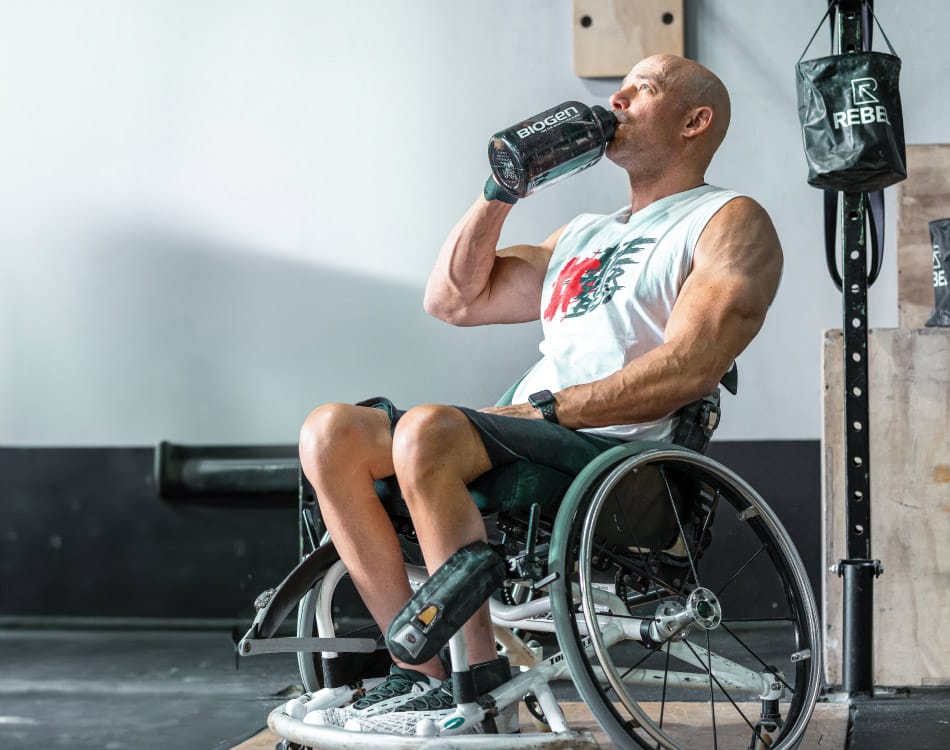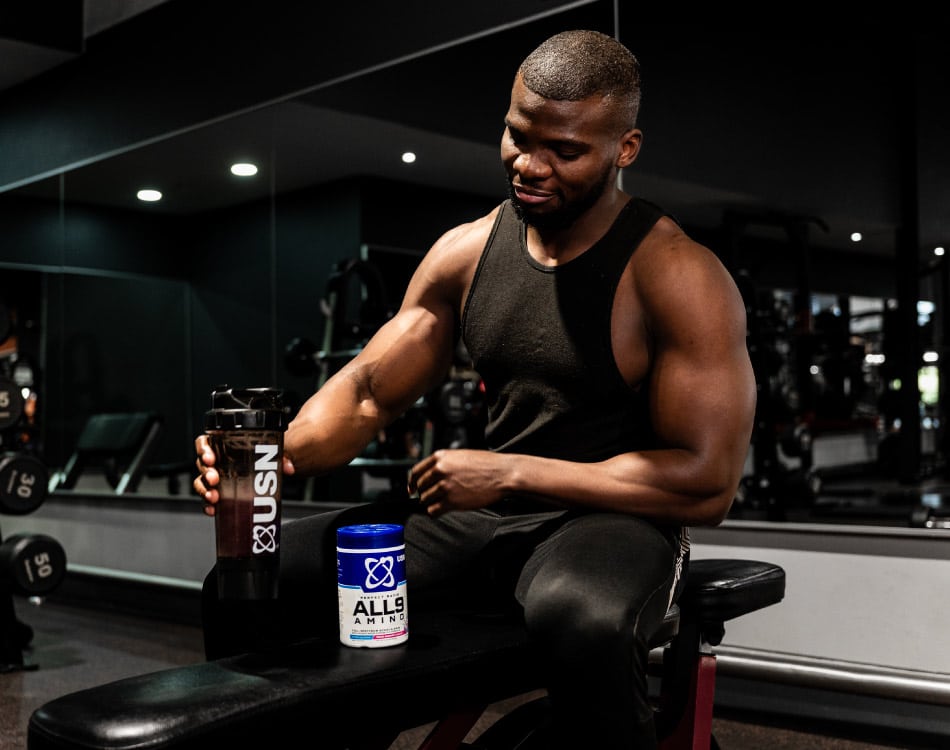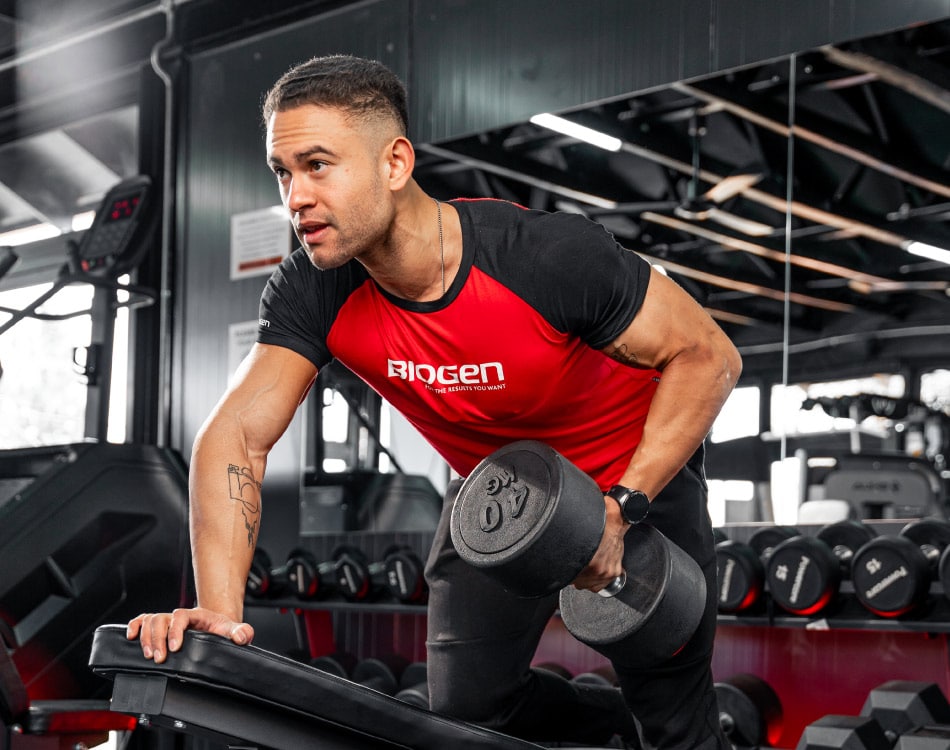In today’s time-strapped world, high-intensity training has become extremely popular. From Tabatas to other metcon workouts, we’re constantly hunting for new ways to boost our effectiveness in the gym.
To this end, it might be worth revisiting a training protocol that was first developed more than a decade ago.
Discover the many benefits of metcon training.
A trifecta of benefits
Escalating Density Training or EDT is a training system that was popularised by Arizona-based strength coach Charles Staley, who has been in the strength and conditioning game since 1983.
EDT is an ideal protocol for anyone who aims to build more muscle, lose fat, and improve their performance.
According to Staley, EDT aims to organise exercises and sets in such a way that lifters can perform a maximum amount of work in a minimal amount of time. It’s yet one more way to incorporate high-volume, or high-density weight training into your routine to benefit from the metabolic and muscle-building effects it delivers.
EDT defined
The goal with EDT is to work toward a time goal rather than a specific rep structure. EDT time blocks – know as PR (personal record) Zones – typically range from 5 to 20 minutes, but Staley advocates 15 minutes as the ideal duration of a block.
He believes that by modifying sets in this manner, which effectively shortens them, you can actually maximise the total number of reps performed over the course of a workout.
Staley developed this philosophy because he believes that the effectiveness of your weight training session does not hinge on how much work you do in specific sets, but rather how much work you perform in a session – ‘big picture’ thinking, as he puts it.
The aim is not to lift to complete failure in your first few sets as you’ll be unable to complete the PR Zone. He, therefore, suggests that you use sub-maximal loads to extend the time to fatigue. With this approach, you may start out by performing five reps of an exercise with a weight equivalent to your 10-rep max.
When you start to fatigue, you move to another exercise – one that targets an antagonist muscle group – and repeat the structure. You then continue moving between the two exercises for the specific time block.
The key is reciprocal innervation
Your aim is to accumulate as many reps as possible on two antagonist exercises, which is an important component of this training protocol because it takes advantage of René Descartes’ law of reciprocal innervation.
Reciprocal innervation results in the simultaneous relaxation of a contracting muscle’s corresponding antagonist. In this way, pairing two exercises that each target antagonists can result in significantly less fatigue than would otherwise be possible.
In fact, the antagonist of a targeted muscle will actually recover faster in this instance than it would during rest as they are forced to relax, which is another enabler of greater workout density during an EDT session.
Escalating density
This time-based approach also means that as you near the end of the time block you may only be able to squeeze out a rep or two of each exercise, but you keep working until your time is up, constantly adding to the number of total reps you perform. You would, however, only start a new set near the end of a PR Zone if you have sufficient time to complete both antagonist exercises.
Then, the next time you perform the same exercise pairing, your goal is to increase the total number of reps you managed to perform in the preceding session.
Continue to do this until you increase your volume by 20%, at which point you increase the weight by 5% or 2.3kg – whichever is less – and begin the process again.
Fighting fatigue
It’s a novel idea and one that Staley suggests in counterintuitive to the average lifter. His reasoning suggests that by targeting a specific rep structure upfront you unnecessarily speed up fatigue, which hampers overall training volume for the session as a whole.
Staley even advocates taking strategic breaks during PR Zones if they’re needed to ensure continued work for the duration of the entire time block.
How to do it:
- Select two antagonist exercises.
- Set your stopwatch or timer app to 15 minutes.
- Perform up to 5 reps per exercise, switching between exercises for the entire 15 minutes.
- If you start to fatigue, rest for a bit or start performing fewer reps in subsequent sets, even if that means doing singles until you reach the end of the PR Zone.
- Record total reps executed for each antagonist pairing.
- Come back next week and eke out a few more reps.
Ideal antagonist pairings:
Chest and back:
- Bench presses + chin-ups
- Dumbbell press + bent over dumbbell rows
- Dumbbell flyes + bent over reverse flyes
- Push-ups + horizontal rows
Shoulders:
- Lateral raises + upright rows
Arms:
- Biceps curls + triceps pushdowns
- Hammer curls + bent over overhead tricep cable extensions
- Barbell curls + lying tricep extensions
Upper legs:
- Squats + stiff-legged deadlift
- Leg extensions + leg curls
When pairing the big compound lifts that target multiple muscle groups, Staley suggests selecting two exercises that have minimal overlap in terms of the muscles they incorporate. Examples include squats + chin-ups; front squats + dips; deadlifts + floor presses.
For those more interested in developing maximal strength through their weight training, Staley suggests adapting the EDT structure to use a six-rep max load and starting the PR Zone with sets of 3 reps.

















Leave A Comment